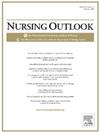Racial microaggressions in nursing: “We have a long way to go”
IF 4.1
2区 医学
Q1 NURSING
引用次数: 0
Abstract
Background
Racism in nursing is a significant issue affecting patient safety, nurse well-being, and job performance.
Purpose
Explore racial microaggression experiences of registered nurses working in a children’s hospital.
Methods
An exploratory, qualitative research design with in-depth interviews was used to collect data.
Discussion
Three categories containing 12 themes resulted. Nurses experienced (1) Biased first impressions, (2) “Firing” the nurse, (3) Questioning experience or credentials, (4) Where do I belong? and (5) All jokes have a grain of truth. Nurses responded through (6) Not being silent, (7) Intentional nonconfrontation, and (8) Showing or seeking support. Nurses used strategies of (9) Empowering, (10) Bracketing, (11) Communicating thoughtfully to build trust, and (12) Doing more to be perceived the same.
Conclusion
Most nurses in the study experienced and committed racial microaggressions; therefore, must be equipped with tools to recognize and respond to them. Moreover, microaggressions negatively impact building a diverse nursing workforce.
护理中的种族微侵犯:“我们还有很长的路要走”。
背景:护理中的种族歧视是影响患者安全、护士福祉和工作绩效的重要问题。目的:探讨某儿童医院注册护士的种族微侵犯经历。方法:采用深度访谈的探索性质的研究设计来收集数据。讨论:共分三个类别,共12个主题。护士经历(1)有偏见的第一印象;(2)“解雇”护士,(3)质疑经验或证书,(4)我属于哪里?(5)所有的笑话都有几分真实。护士的反应是(6)不沉默,(7)有意不对抗,(8)表现或寻求支持。护士使用的策略是(9)授权,(10)拥抱,(11)深思熟虑地沟通以建立信任,(12)做更多的事情以被认为是一样的。结论:本研究中大多数护士有过种族微侵犯行为;因此,必须配备工具来识别和应对它们。此外,微侵犯对建立多样化的护理队伍产生负面影响。
本文章由计算机程序翻译,如有差异,请以英文原文为准。
求助全文
约1分钟内获得全文
求助全文
来源期刊

Nursing Outlook
医学-护理
CiteScore
6.20
自引率
7.00%
发文量
109
审稿时长
25 days
期刊介绍:
Nursing Outlook, a bimonthly journal, provides innovative ideas for nursing leaders through peer-reviewed articles and timely reports. Each issue examines current issues and trends in nursing practice, education, and research, offering progressive solutions to the challenges facing the profession. Nursing Outlook is the official journal of the American Academy of Nursing and the Council for the Advancement of Nursing Science and supports their mission to serve the public and the nursing profession by advancing health policy and practice through the generation, synthesis, and dissemination of nursing knowledge. The journal is included in MEDLINE, CINAHL and the Journal Citation Reports published by Clarivate Analytics.
 求助内容:
求助内容: 应助结果提醒方式:
应助结果提醒方式:


